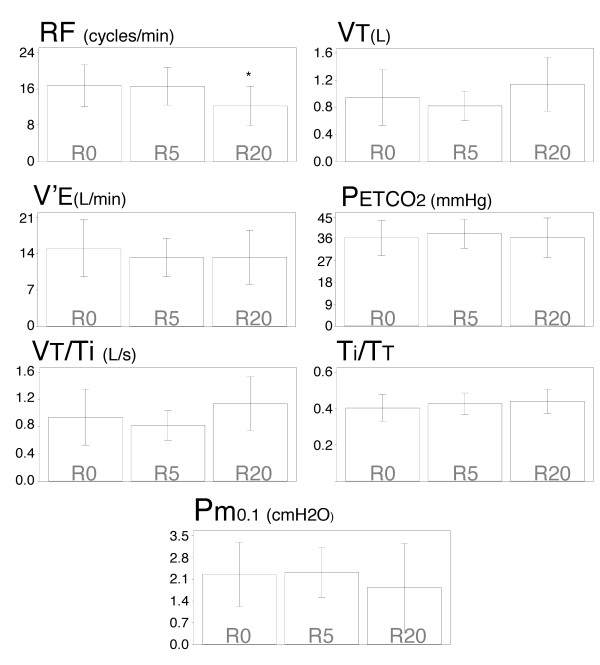Figure 1.
Inspiratory resistive loading and breathing pattern. Effectof breathing against inspiratory linear resistive loads onrespiratory frequency (RF), tidal volume (VT), minute ventilation(V'E), end-tidal carbon dioxide in the expired gas (), mean inspiratory flow (VT/TI), duty cycle (TI/TT) and occlusion pressure (Pm0.1). Each bar corresponds to the mean of the corresponding data, with indication of ± 1 SD. The "*" stands for a significant difference at the 5% threshold.

